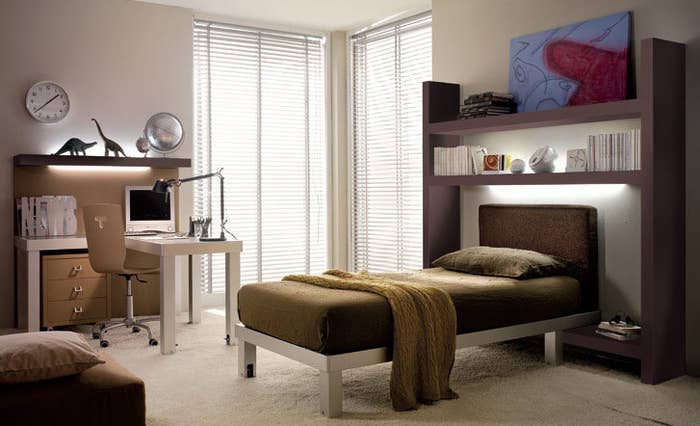With drug abuse remaining one of the increasingly dangerous threats to which children are exposed in their adolescent years, parents – who bear the sometimes heavy cross of protecting their offspring until it is ready to roam the paths of life by themselves – should always keep a vigilant eye out for potential signs of substances intake by their kids.
This, however, doesn't mean you should go ballistic and immediately send your kid to rehab if you notice him/her deliberately avoiding eye contact, breaking curfew on a regular basis, or suddenly downgrading personal hygiene. Nevertheless, since teenagers are – for a series of developmental and social reasons – extremely prone to experimenting with alcohol, marijuana, prescription medicines, or illicit drugs, you should take urgent measures to find out whether you are dealing with substance dependence. If on a single occasion your 16 years old daughter burst out in tears laughing for no reason, it might be that she has once experimented with a joint (or it were simply her raging hormones taking edge over sane behavior). On the other hand, discovering hidden drugs in your house will most likely indicate a potentially life-ruining addiction.
Revealing concealed stashes, however, is an extraordinary parental task which is by far not easy to complete. As Per Wickstrom (to whom even the most surreal ways kids use to hide drugs are no secret) says "'the fear of getting found out actually brings about some of the most incredible mind mastery in kids to cover up drug use. It's amazing to see that even when they are failing in their studies, can't work or get along with parent and friends, they can still hide their purchasing their drug abuse in ways you couldn't imagine. However, regardless of how they hide it, the earliest signals will always be in behaviour differences."
Kid's Room

1. Electronic Devices
Computers, Radios, video game consoles (such as Play Station) and other electronic devices are broadly used as cache for drugs since they usually have battery or other compartments which can be opened and closed easily.
2.Musical instruments and accessories
If your kid happens to play some type of a musical instrument, you should consider that an acoustic guitar, a guitar case, or an amp are fully fit to serve also purpose which are not directly related to music as well.
3. Beds
Possibly because of it being so blatantly trivial, beds are as always a common hiding place for unwanted substances. Therefore, you should examine the spaces between and underneath mattresses as well as the insides of pillows.
4. Drawers
If you are to explore the drawers in your potentially drug-addicted child for hidden dope, have in mind that they would most probably have taped their stash to the exterior part of drawers' backs (by taking them off their tracks and bringing them back afterwards) or the below the bottom drawer.
5.Light switches' and outlets'
Plates are very simple to remove and place back, so you might want to remove the screws and throw a look behind them.
6. Behind Posters or Pictures
Having your attention already directed at the walls of your child's room, if there are any pictures or posters hanging, you could also check whether they don't hide something on their other side.
7. Writing Utensils
Highlighters, markers and other writing utensils are common items to be found in a teenager's room, and they are terribly easy be opened, emptied, converted to secret stashes and reassembled again.
8. Stuffed Toys
Stuffed toys are also a place where concerned parents are likely to forget checking for drugs (for example, there was a post on Reddit, where a mother shared she did wonder why her 17 years old daughter would always bring her Teddy bear along to sleepovers at friends, but simply thought it was "cute" before the truth being unveiled to her years later).
9. Cosmetic Items
You should also not ignore the camouflaging potential of common cosmetic items such as deodorant (bottles), makeup (boxes), or lip balm, and make sure they aren't used for other than their original purpose.
10. Books
Despite the Internet hype, the average teenager room continues to usually shelter a bunch of books. Here there are two main possibilities: the stash will be hidden inside a hollowed out book, or placed behind a random tome on the shelf.
11. Old Shoes
Another classical trick that you child may employ in keeping their dope undetected is to put it in a pair of old shoes which is never worn.
12. Clothing
Similarly, you should also inspect the pockets of hoodies, jackets, shorts, etc. especially such that seem to never leave the closet.
Around the House

13. Fish Tanks
Underneath them or inside them, stored in water-proof containers;
14. Bathroom
Taped to the bottom of the sink, under toilet tank or inside the exhaust fan;
15. Vents
Taped to vent covers or inside vent ducts;
16.Drop ceilings – on top of the tiles;
17.Sibling's room;
18.Your car;
19.In the yard, usually beneath something heavy;
20.The dog's house.
Please bear in mind that no listing of possible ways how kids conceal their drugs at home can be entirely comprehensive. As teenagers are "individuals in development", and they are more severely exposed to factors such as peer pressure, eagerness to experiment, and emotional instability, it shouldn't shock and devastate you even in case you find your kid has secretly stored drugs in your house. Instead, it is immensely recommendable to openly speak with your kid as well as consult to consult drug addiction treatment specialists.

